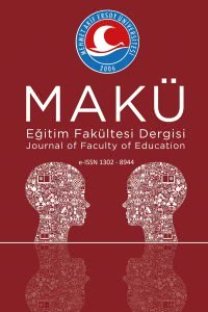Yabancı Dil Öğretiminde Soru Sorma Teknikleri ve Önemi
Bu çalışmada soruların ve soru sorma tekniklerinin önemine, sebeplerine, farklılıklarına ve farklı soru tiplerinin öğrenci cevaplarına ne tür etkileri olduğuna değinilmektedir. Bunun yanı sıra farklı tipte sorular sorulması öğretmenlerin soru sorma davranışlarını etkilediği gibi sınıf içerisinde oluşan iletişimi de etkilemektedir. Bu durum özellikle yabancı dil dersleri söz konusu olduğunda çok daha fazla bir öneme sahiptir. Çünkü öğrencilerin vereceği cevapların niteliği, uzun veya kısa olması gerek hedef dil becerilerinin gelişmesi gerekse hedef dilin yaratıcı bir şekilde kullanılması açısından oldukça önemlidir. Sonuç olarak ders her ne olursa olsun soruların ve soru sorma tekniklerinin öğretme-öğrenme ortamlarının merkezinde yer aldığı ve gerek öğretmenlerin gerekse öğretmen eğitimiyle ilgili olanların bu konuya daha fazla önem vermeleri gerektiği vurgulanmaktadır.
This study deals with the importance, reasons, differences and effects of different question types on student responses. Besides asking different types of questions not only affect teachers’ questioning behaviours but also the communication in the classroom. This situation becomes ever more important when the subject matter is modern foreign languages. Because the quality and the range of student responses are extremely important in the development of language abilities and in the creative use of the target language. As a result it has been noted that questions and questioning techniques, whatever the lesson, are at the centre of teaching-learning situations and that both teachers and teacher educators should pay more attention to this subject.
___
Brock, C.A. (1986). The Effects of Referential Questions on ESL Classroom Discourse, TESOL Quarterly, 20/1: 47-59.Bloom, B.S. (1956). Taxonomy of educational objectives: handbook 1: cognitive domain. New York, David McKay.
Dillon, J.T. (1988). Questioning and Teaching: a manual of practice. London, Croom Helm Ltd.
Doff, A. (1995). Teach English: a training course for teachers-trainer’s handbook. Cambridge University Pres.
French, F.G. (1963). Teaching English as an International Language. Oxford University Press.
Gall, M.D. (1970). The Use of Questions in Teaching, Review of Educational Research, 40/5: 707-721.
Hoetker, J. (1968). Teacher Questioning Behaviour in Nine Junior High Schools English Classes, Research in the Teaching of English, 2: 99-106.
Kerry, T. (1998). Questioning and Explaining in Classrooms. London, Hodder and Stoughton.
Kissock, C. and Iyortsuun, P. (1982). A Guide to Questioning: classroom procedures for teachers. London, The Macmillan Press Ltd.
Morgan, N. and Saxton, J. (1991). Teaching, Questioning and Learning. London, Routledge.
Nash, R.J. and Shiman, D.A. (1974). The English Teacher as Questioner, English Journal, 63: 38-44.
Perrott, E. (1992). Effective Teaching; a practical guide to improving your teaching. London, Longman.
Richards, J.C. and Lockhart, C. (1994). Reflective Teaching in Second Language Classrooms. Cambridge University Press.
Stevens, R. (1912). The question as a measure of efficancy in instruction, Teachers’ College Contribution to Education, 48.
Tsui, A.B.M. (1995). Introducing Classroom Interaction. London, Penguin Books Ltd.
Ur, P. (1996). A Course in Language Teaching: Practice and Theory. Cambridge University Press.
Van Lier, L. (1996). Interaction in the language curriculum. Oxford University Pres.
- ISSN: 1302-8944.
- Yayın Aralığı: Yılda 2 Sayı
- Başlangıç: 2018
Sayıdaki Diğer Makaleler
İlköğretim Denetmenlerinin Denetim Süresince Karşılaştıkları Sorunlar
Eğitimde Farklılıkların Yönetimi Ölçeğinin Uygulanabilirliği
Müzik Eğitiminde Online Sistemler ve İnteraktif Yazılımlar
Örgüt Geliştirmede Yapısal Aracılar
Yazılı Kanyon (Sütçüler, Isparta) Tabiat Parkı'nın Turizm Açısından Önemi ve Kullanımı
"Çalıkuşu" ve "Yeni Turan" Romanlarındaki Eğitim Felsefesi ve Öğretmen Modeli
Liselerimizde Uygulanan Coğrafya Öğretim Programının Sorunları ve Çözüm Önerileri
Üniversite Öğrencilerinin "Analiz" Konularındaki Hataları ve Kavram Yanılgıları
